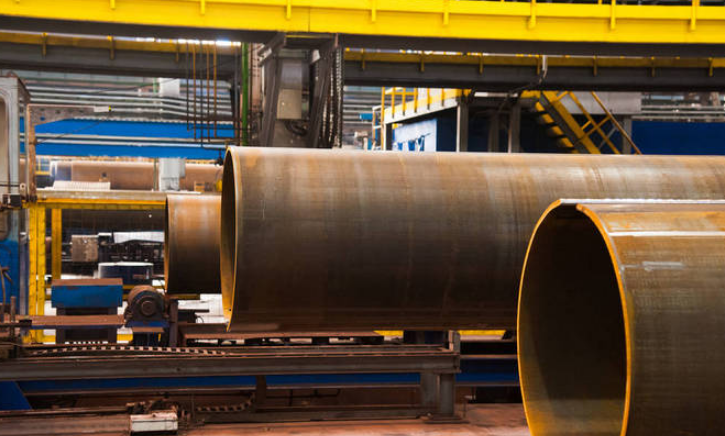
6 Main Methods of Steel Pipe Production
1) Production of seamless steel pipes (SMLS) with an automatic pipe rolling mill
The tube blank is pierced into a capillary tube on a cross-rolling piercing machine, and then the wall is reduced on an automatic tube rolling machine, and then the finished product is produced through equalizing, sizing (reducing), straightening, and finishing. The diameter of the hot-rolled tubes of 100~400 units is generally 57~426mm, and the wall thickness is 2~60mm. Among them, small-diameter steel pipes are produced by reducing machines, and large-diameter steel pipes are produced by secondary piercing machines and diameter expanding machines.
2) Produce seamless steel pipes with periodic pipe rolling mills
First, the round steel ingot or round billet is pierced on the hydraulic press, and then the finished steel pipe is rolled out on the periodic pipe rolling mill. The product diameter is 200~500mm, and the wall thickness is 5.6~80mm.

3) Production of seamless steel pipes with continuous rolling mills
The capillary is reduced in diameter and wall on a continuous rolling mill, and rolled into a seamless steel pipe. There are two forms of continuous pipe rolling mill: one is that the rolls are arranged vertically and staggeredly; the other is that the rolls are arranged at different angles. The product diameter is 34-400mm, and the wall thickness is 2.0-2.5mm.4) Produce seamless steel pipes with pipe jacking units
First, the steel ingot or billet is extruded into a cup-shaped blank with a hydraulic press, and then the diameter is expanded and the wall is reduced in a hot state. The maximum diameter of its products has reached 1000mm abroad and 650mm domestically.5) Production of steel pipes with cold drawing machines
Using hot-rolled seamless steel pipes or welded steel pipes as blanks, steel pipes and small-diameter steel pipes with little change in wall thickness are produced. Steel pipes can be made into circular, rectangular, triangular and other cross-sectional shapes by cold drawing. Usually the product diameter is 6-65mm, and the wall thickness is 1-5mm.6) Produce seamless steel pipes with a cold rolling mill
The hot-rolled steel pipe is used as the blank, and the steel pipe is rolled on a cold-rolling mill. There are two common cold rolling mills, namely, two-roller periodic tube mill and multi-roller tube mill. In addition, there are planetary cold rolling mills, continuous cold rolling mills, etc.7) Production of seamed steel pipes by welding
The production of welded steel pipes uses straight strips or coiled strips as raw materials. The commonly used welding methods include furnace welding, resistance welding and arc welding. There are two kinds of weld seams of the produced steel pipes: straight seam and spiral seam. The furnace welding method can only produce straight seam welded pipe (LSAW pipe), and its product diameter is 10-114mm, and the wall thickness is 2-10mm. The diameter of the straight seam welded pipe (ERW pipe) produced by the resistance welding method can reach 620mm, and the wall thickness is 0.4-20mm; the diameter of the spiral welded steel pipe (SSAW pipe) can reach 3660mm. The arc welding method is suitable for high-quality steel and alloy steel, and is often used to produce spiral welded pipes with a diameter of more than 1000mm.
Go here to learn more about "Identification of Seamed Steel Pipes and Seamless Steel Pipes"


